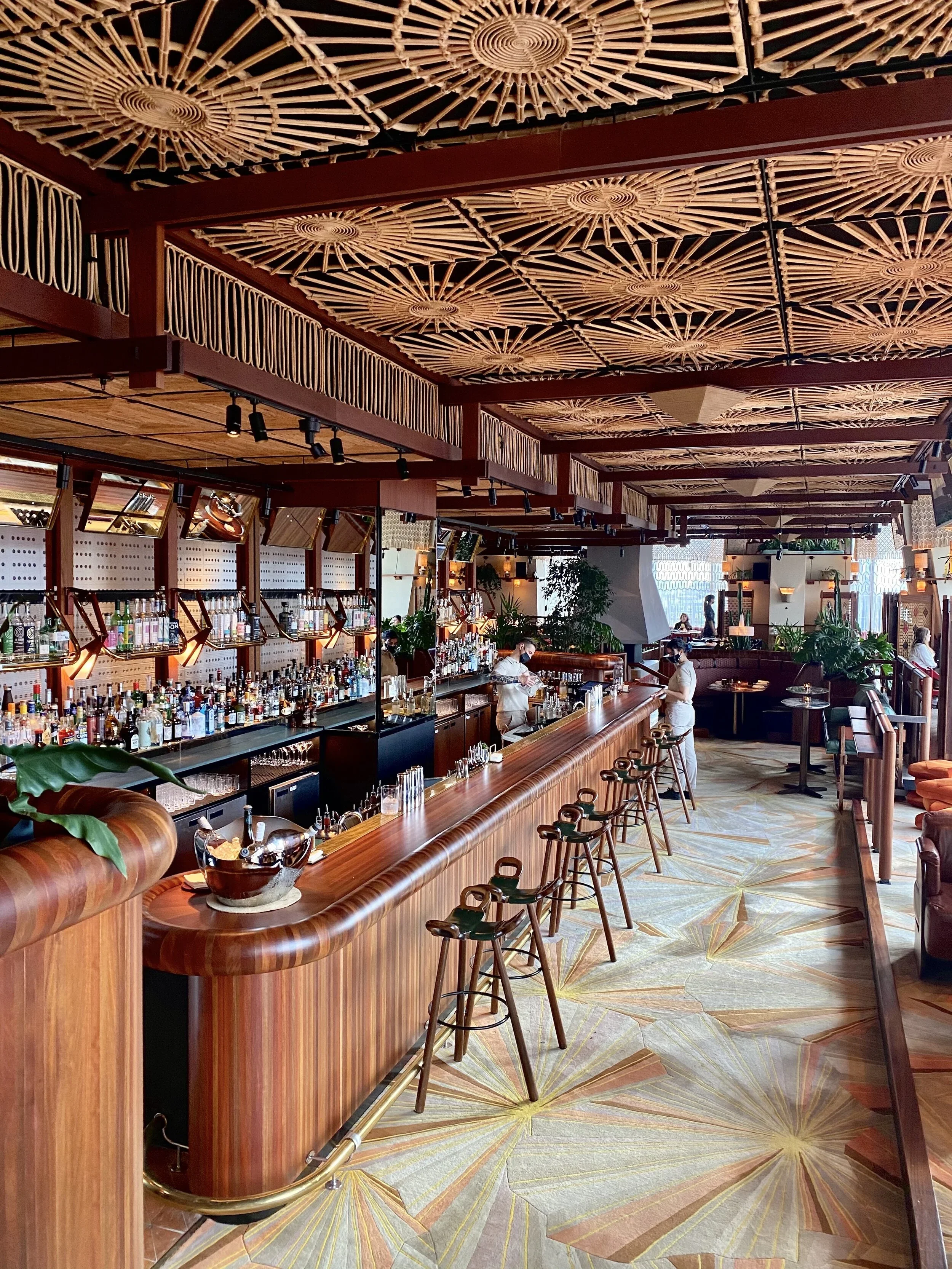Stop Building Hotels.Start Building Public Houses.
Why the real KPI of a lifestyle hotel is the locals who choose to spend their time downstairs.
The Hoxton Paris
The real success of a lifestyle hotel isn’t measured by how many people check in upstairs, but by how many locals walk through the door downstairs.
One of the defining hallmarks of a lifestyle hotel is its ability to transcend the very word “hotel”. The best examples don’t just accommodate overnight guests, they draw a loyal crowd to their restaurants, bars, rooftops, and lounges, creating destinations in their own right.
Even if you consider the word hotel, which by definition is a place for lodging or sleeping, it’s revealing to compare it with the idea of the public house, a term used for centuries across Great Britain and, more recently, in Australia. The public house refers to the neighbourhood pub or watering hole, a place that welcomes all members of the community.
Locals might even describe it as an extension of their own living room, a “third space” outside of home and work where they can socialise, connect, and simply enjoy being part of something.
Across Europe, similar concepts have existed for centuries, from the French auberge and taverne to the Italian osteria, each serving food, drink, and conversation to both travellers and townsfolk alike.
As Amar Lalvani, former President of Standard Hotels, famously put it: “We welcome everyone, but not everybody is for us.”
It’s a reminder that lifestyle hotels thrive on openness, energy, and community. They blur the line between local hangout and guest-only sanctuary, creating places that feel relevant, authentic, and alive.
But creating that sense of openness doesn’t happen by accident. It takes deliberate design, thoughtful programming, balanced pricing, and the right people.
Breaking Down the Barriers: Physical, Cultural & Psychological
For many hotels, the first hurdle is physical, not because of design flair, but because the layout unintentionally signals exclusivity. Think of the traditional grand desk in the middle of the lobby, dividing guest from host; the very first interaction feels more like a transaction.
The best lifestyle hotels take the opposite approach. A tucked-away reception desk, casual check-in stations, or staff who greet you in motion rather than behind a counter all help make the arrival feel relaxed, intuitive, and human.
The guest’s first impression isn’t “Where do I check in?” but “Where do I belong?”
From a design perspective, it’s critical to consider how a space can operate across different modes, morning, day, and night, while maintaining commercial flexibility and rhythm.
We’re not simply talking about turning the hotel bar into a reception counter (that might work for a 50-room boutique, but not for a hotel of scale). Rather, it’s about how spaces adapt - from morning coffee to mid-morning meetings, lunch, drinks, dinner, events, and late-night energy. The best hotels globally don’t take their real estate for granted.
They’ve become maestros of programming. Yes, it takes constant effort to keep it dynamic and interesting, but the results are reflected in the strong revenue numbers that follow.
Design details matter: clear sightlines, welcoming entry points, and visible activity from the street encourage people to step inside. A smile, ambient music, or the smell of coffee is often the true “reception.”
Images: La Fantasie
For the Locals, Not Just the Guests
For Brach Hotel Paris, designer Philippe Starck intentionally avoided the traditional “front desk in the centre” layout. The reception is discreetly integrated within the lounge and restaurant environment, blurring the line between hotel guest and local patron - exactly in the spirit of the public house argument. One might describe this independent Parisian hotel as vibrant and happening, filled not just with travellers, but with locals from the 16th arrondissement who treat it as an extension of their own neighbourhood.
Similarly, The Hoxton Paris has long mastered the idea of a public-facing courtyard space - a living, breathing sanctuary that pulls locals off the busy streets of the 2nd arrondissement. And at La Fantaisie Paris, Martin Brudnizki’s design delivers a lush courtyard garden and a serene rooftop bar, Bar sur le Toit, a hidden oasis that feels calm, local, and lived-in, rather than showy or exclusive.
And then there’s Hotel Sookie, another small independent hotel in Paris’ Marais district, home to what might be the city’s tiniest lobby café and bar, Suzie Blue. So why bother? Because it brings life into the hotel. The space hums with locals and travellers connecting over coffee, croissants and conversation. It gives the hotel a soul - a sense of place, connection, and everyday theatre that no amount of design alone can manufacture.
These hotels, though vastly different in scale, all share one thing: a belief that hospitality starts at the street.
When Design Becomes a Barrier
Not every “lifestyle” hotel gets it right. A telling example is QT Melbourne, a hotel with a strong brand, bold design, and all the right ingredients for success, yet one clear misstep: the restaurant’s location.
Rather than opening directly to the street, the hotel’s primary restaurant, Pascale Bar & Grill, sits one level above ground, accessible only by a flight of stairs or via the internal lift.
It might sound minor, but in Melbourne, a city built on its café and laneway culture, that simple separation has proven a major barrier.
Locals are instinctively drawn to venues they can see, hear, and feel from the pavement; anything hidden or elevated reads as “private,” “exclusive,” or simply too hard to get to. The result? While QT Melbourne’s rooftop bar thrives, Pascale has struggled to attract and retain a strong local following. It’s not a question of design quality or service, it’s about visibility, accessibility, & psychological proximity.
The lesson is simple but profound: if you want locals to populate your F&B venues, you have to meet them where they already are, at street level. In hospitality, even a few stairs can feel like a wall.
When Good Intentions Get Lost in Layout
Even hotels built with the best intentions can miss the mark. Take the Canopy by Hilton Paris Trocadéro, a property proudly positioned as “neighbourhood-friendly,” with a bar, restaurant, and library space designed to welcome locals as much as hotel guests.
On paper, it sounded perfect: casual dining, community energy, and a relaxed living-room vibe. In reality, all of these spaces were tucked away at the back of the building, beyond the hotel’s reception area and check-in zone. The result? Most passers-by never even knew they were there.
To reach the restaurant or bar, you had to walk past reception, a subtle but powerful deterrent. The atmosphere that was meant to feel open and inviting instead felt private, like you were trespassing in someone else’s space. The intention to connect with the neighbourhood was there, but the design hierarchy sent the opposite signal.
It’s a reminder that “neighbourhood-friendly” isn’t a slogan, it’s a spatial strategy.
Locals need to see life, energy, and entry points from the street. If they can’t see it, they won’t step inside.
Images: The Standard Brussels, Demico at The Standard London
Accessibility & Belonging
There’s a long-held prejudice that hotels overcharge, $7 coffees, inflated wine lists, overpriced breakfasts. Successful lifestyle hotels work hard to dismantle this perception. They calibrate pricing to be approachable and competitive with the best local venues, ensuring that guests and locals alike feel value, not exploitation.
Affordability, or at least perceived fairness, is essential to long-term success. Without it, locals will simply stay away.
Lifestyle hotels also navigate a delicate balance: being inclusive while still cultivating a distinct vibe. They need to welcome everyone, young and old, singles and families, pets included, across all identities and backgrounds, while still attracting their crowd.
As Lalvani’s quote implies, the magic lies in authenticity and selectivity without exclusion.
Based on research with leading lifestyle brands and operators, we’ve consistently found that between 70% and 90% of total F&B spend comes from non-hotel guests. That single statistic changes everything about how a hotel P&L should be developed and managed.
These venues aren’t brand-standard boxes—they’re stand-alone destinations that just happen to be inside hotels. And when they’re done well, they also drive a premium on room rates.
The Magic in the Mix
On my recent travels across Europe, this balance was evident everywhere. At The Standard Brussels, the rooftop restaurant wasn’t filled with supermodels or A-listers, it was an older couple dining with their adult children, enjoying the sunset.
At The Standard London, a product launch in the hotel’s lobby bar attracted design enthusiasts, local professionals, and curious neighbours.
And at The Hoxton Paris, I met an Australian family staying for several days, using the hotel as their living room, dining room, and launchpad for the city.
The point is clear: lifestyle hotels are not the exclusive domain of influencers or celebrities. They succeed when they attract a broad, eclectic mix of people who all feel comfortable in the same space. The magic is in the mix.
The Hoxton Brussels - TOPE Rooftop Bar
Reframing the Hotel as a Public Asset
In Australia, the cultural barrier to entering hotels remains very real. Many still see them as private, exclusive spaces meant only for checked-in guests. Yet even in Europe, locals initially shared the same hesitation.
The difference? The best lifestyle hotels work actively to dismantle that mindset. They view their properties as public assets, as much for the neighbourhood as for overnight guests.
When hotels get this right, they stop being “hotels” in the traditional sense and become vibrant cultural platforms that anchor their communities.
The Bigger Question
So, the question remains:
What are you doing to break down the barriers - real or perceived - that keep people from walking through your doors?
Because in today’s market, success is no longer about who sleeps upstairs.
It’s about who chooses to spend their time downstairs, and whether they leave with the feeling that they belonged.
Images: BRACH Paris











